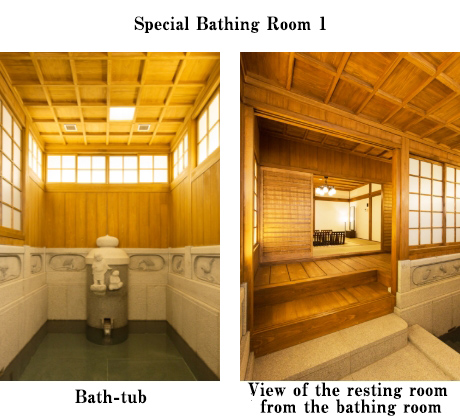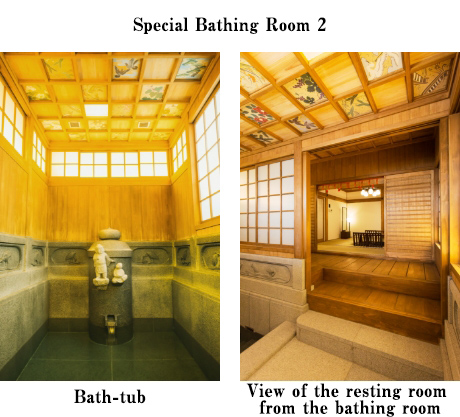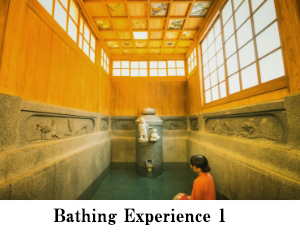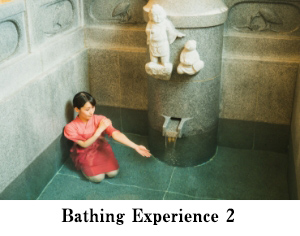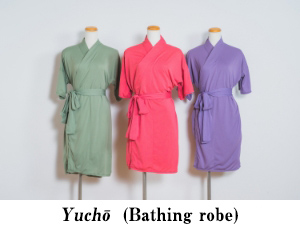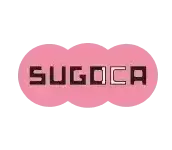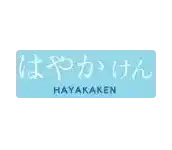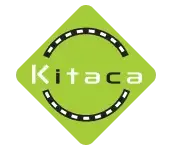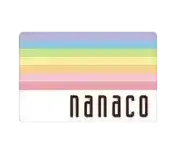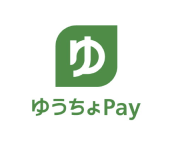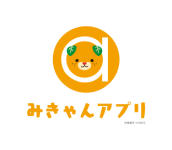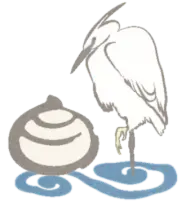
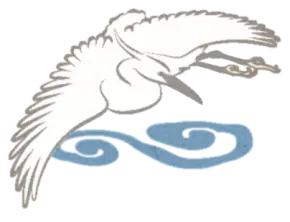


-
Dōgo Onsen Honkan+
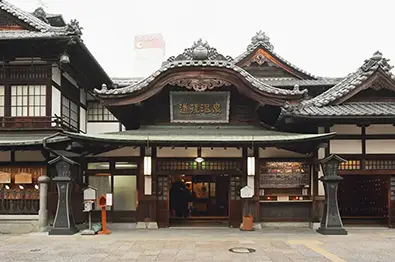
-
Asuka-no-Yu+

-
Tsubaki-no-Yu+
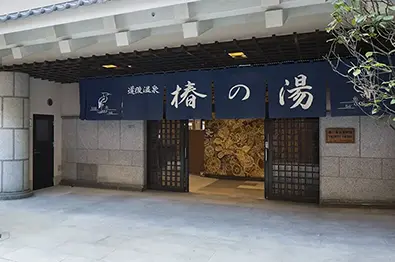
Dogo Onsen Annex Asuka-no-Yu
Dogo Onsen Front Page > Dogo Onsen Asuka-no-Yu
Dogo Onsen Annex Asuka-no-Yu is a new bathhouse constructed in the architectural style of
the Asuka period.
Architectural concept
An Asuka style bathhouse
An Asuka style bathhouse
Constructed in the architectural style of the Asuka period, Dōgo Onsen Annex Asuka-no-Yu stands as a picturesque symbol of Japan’s oldest hot spring, steeped in the history and legends of visits by Prince Shotoku and the Empress Saimei. Just like Dogo Onsen Honkan, Dogo Onsen Annex Asuka-no-Yu is a hot spring especially beneficial to the skin that flows straight from the source with no reheating or addition of water.
The building’s roof is topped with a cupola, a symbol of Dogo Onsen, and in the entrance courtyard is a group of camellia trees known as Tsubaki-no-Mori, recreating a scene from the time when Prince Shotoku visited Dogo Onsen. It is said that at that time he left a stone marker, Yuno-oka-no-hi, on which was inscribed "Around the hot spring of the god, camellia trees grow thick, their branches intertwined. The fruit of the camellias hang low above the water, hiding the fallen petals."
Inside are spacious large baths as well as open-air baths, which Dogo Onsen Honkan does not have. There are also two Special private baths that are replicas of the Yūshinden, the bath reserved solely for the Imperial Family at Dogo Onsen Honkan. Here guests can experience bathing in a yucho* bathing robe. Dogo Onsen Annex Asuka-no-Yu also has a spacious 100m² relaxation room and 5 private relaxation rooms where guests can enjoy Dogo Onsen hospitality with tea service.
* Also called “yukatabira,” yucho is believed to have been worn by nobility and is the origin of today’s yukata.
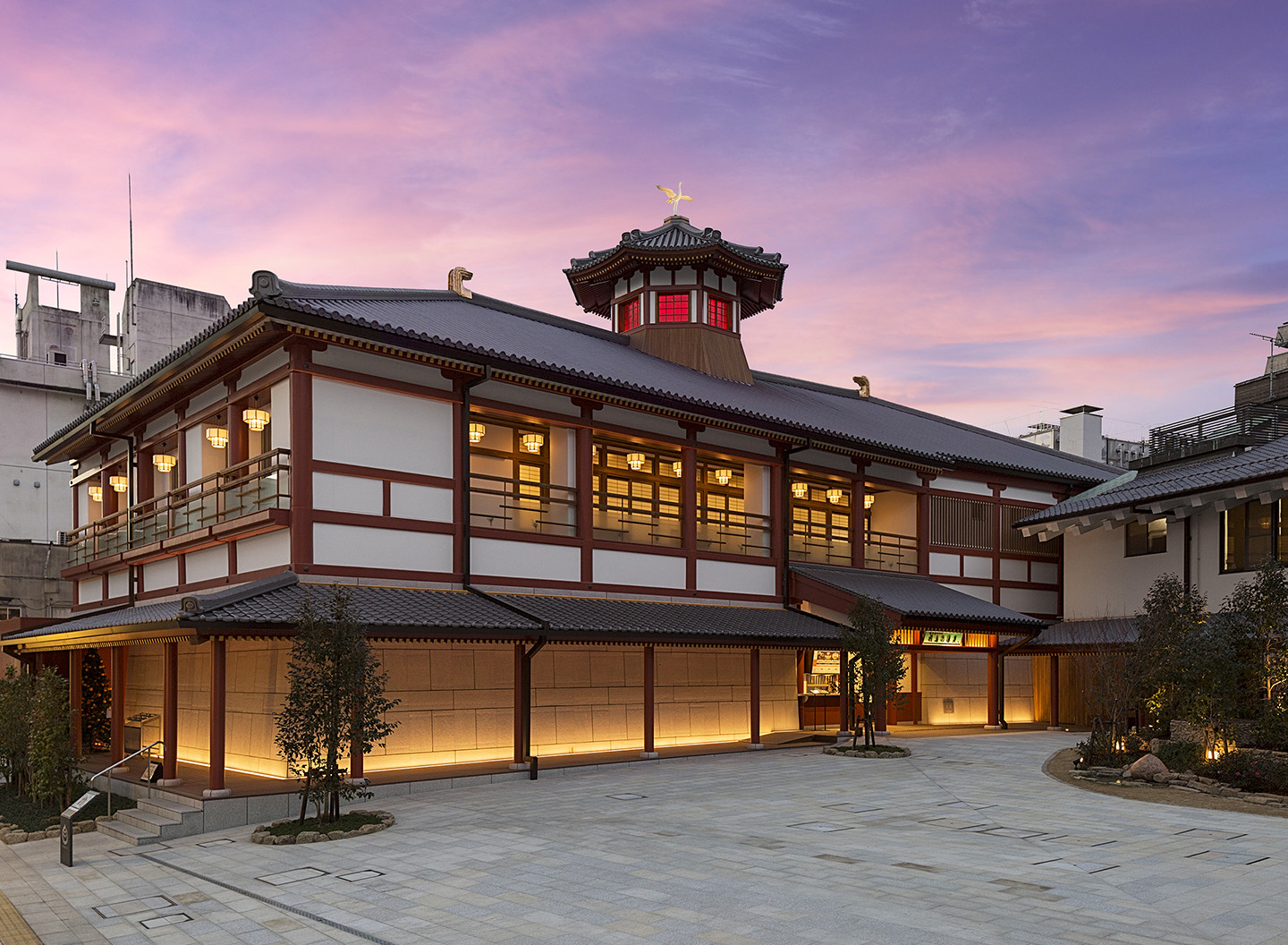
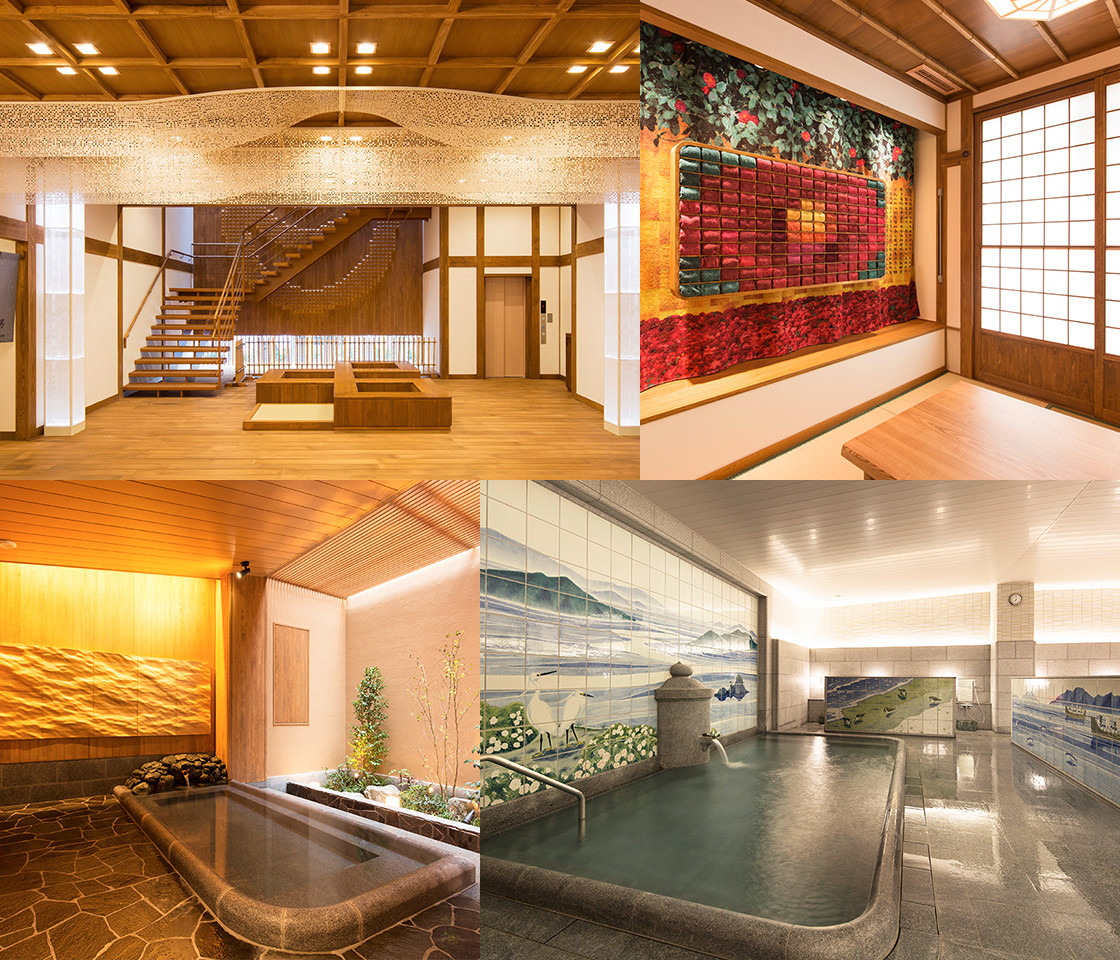
Introducing a new onsen culture
Based on the theme of “Ancient Dogo” and designed to depict the stories and legends of Dogo Onsen through a collaboration of traditional Ehime handicrafts and cutting-edge art, Dogo Onsen Annex Asuka-no-Yu combines revivifying onsen waters with a stimulating introduction to a new onsen culture that can only be experienced here in Dogo, Matsuyama.
Building layout
Interior Design
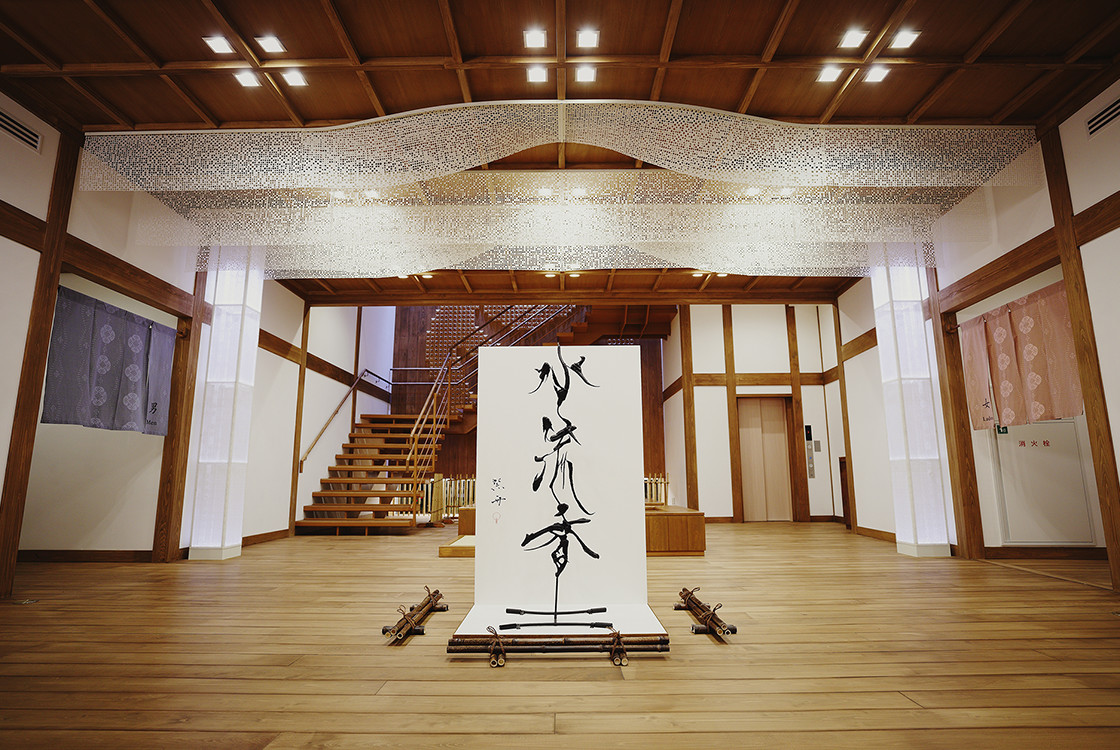
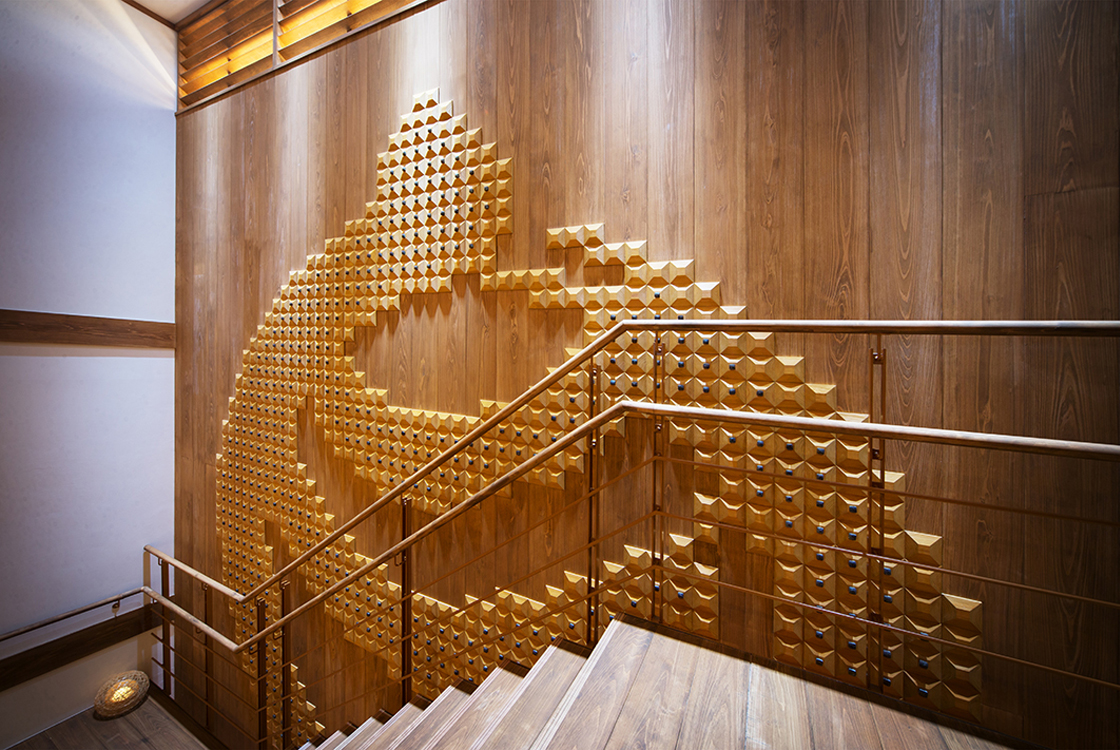
Entrance: Gateway to ancient Dogo
As a gateway to step into ancient Dogo, light shades evoking the look of a temple gate, which are made of air-purifying zeolite washi paper, beckon guests to a warm bath to purify body and mind.
The entrance also features a carving of a work by the calligrapher Sishū. The Japanese characters水流香 (sui ryū ka) represent the fusion of an illustrious history with a new onsen culture.
At the rear of the entrance is a woodcut mural featuring a large yudama icon, a symbol of Dogo Onsen that was carved with traditional Japanese wakugi nails, known as “the nails that last 1,000 years.” These nails were also used in rebuilding the West Pagoda and cloisters of the World Heritage-designated Yakushi-ji Temple in Nara. The atmosphere enables guests to truly feel they have come to Japan’s oldest hot spring, Dogo Onsen.
At the entrances to the men’s and women’s bathing areas are hung noren curtains made of Iyogasuri, one of Japan’s top three kasuri fabrics.
Bathing areas: Open-air baths and large rooms surrounded by murals
In the large baths, Tobe porcelain panel wall murals like those featured in the Dogo Onsen Honkan depict scenes from poems related to Dogo Onsen. The mural in the men’s bath features sacred Mt. Ishizuchi, the highest peak in Iyo, from a poem of Yamabe-no-Akahito, and the scene in the women’s bath is of Nikitatsu port on the Seto Inland Sea from the poem of Nukata-no-ōkimi. These porcelain murals surround the baths on three sides, so you can take a bath enjoying the world of waka (traditional form of poetry) recreated in Tobe porcelain.
In the open-air baths, decorative panel murals made of Ehime Prefecture’s Himehinoki cypress depict magnificent mountain and ocean scenes. Lanterns made using the same type of Kikuma-gawara roof tiles used on Matsuyama Castle and the Kyoto Imperial Palace evoke the ancient world described by Man'yoshū poems.
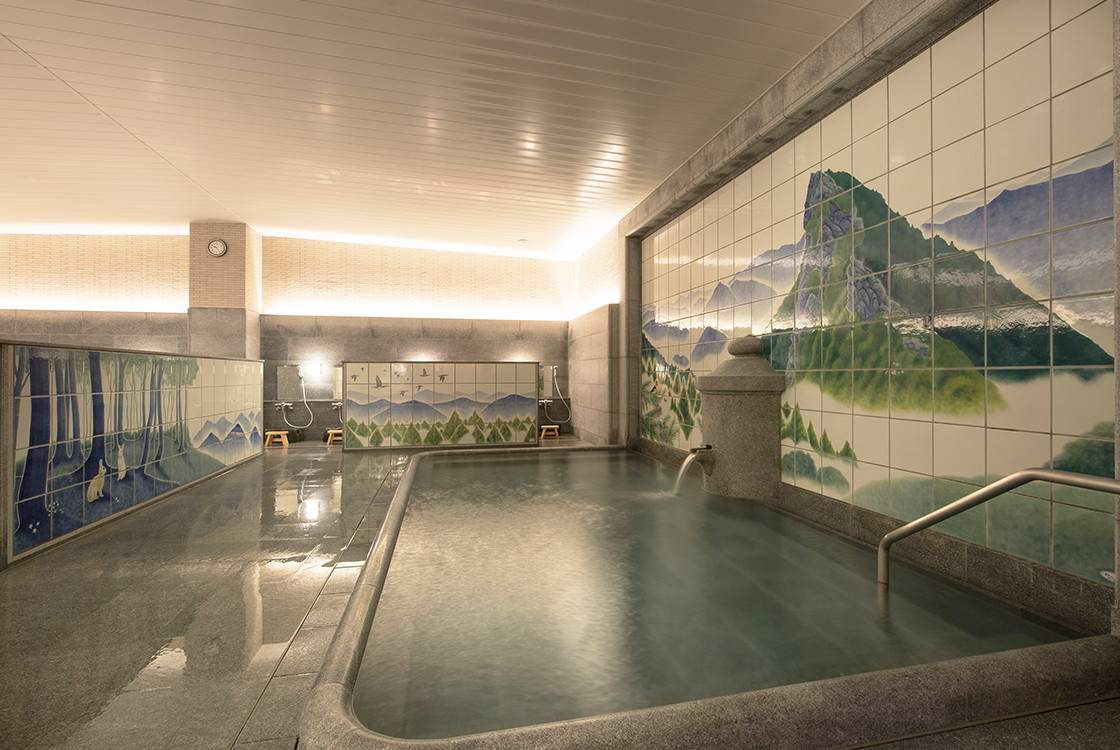
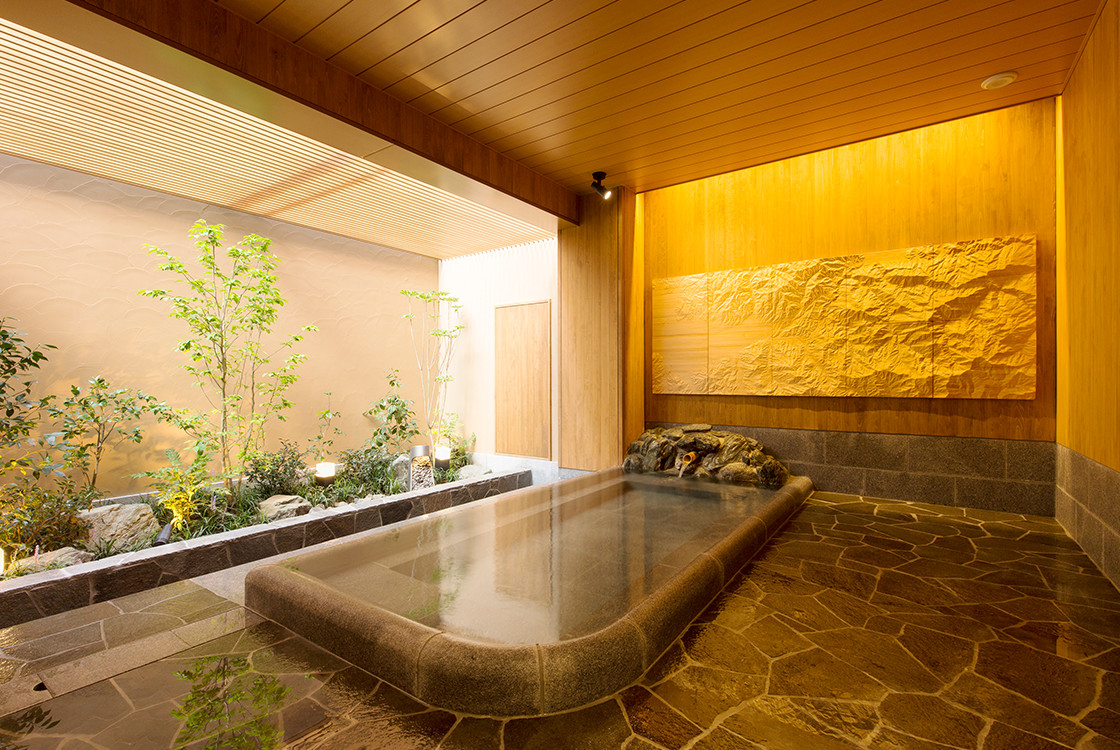
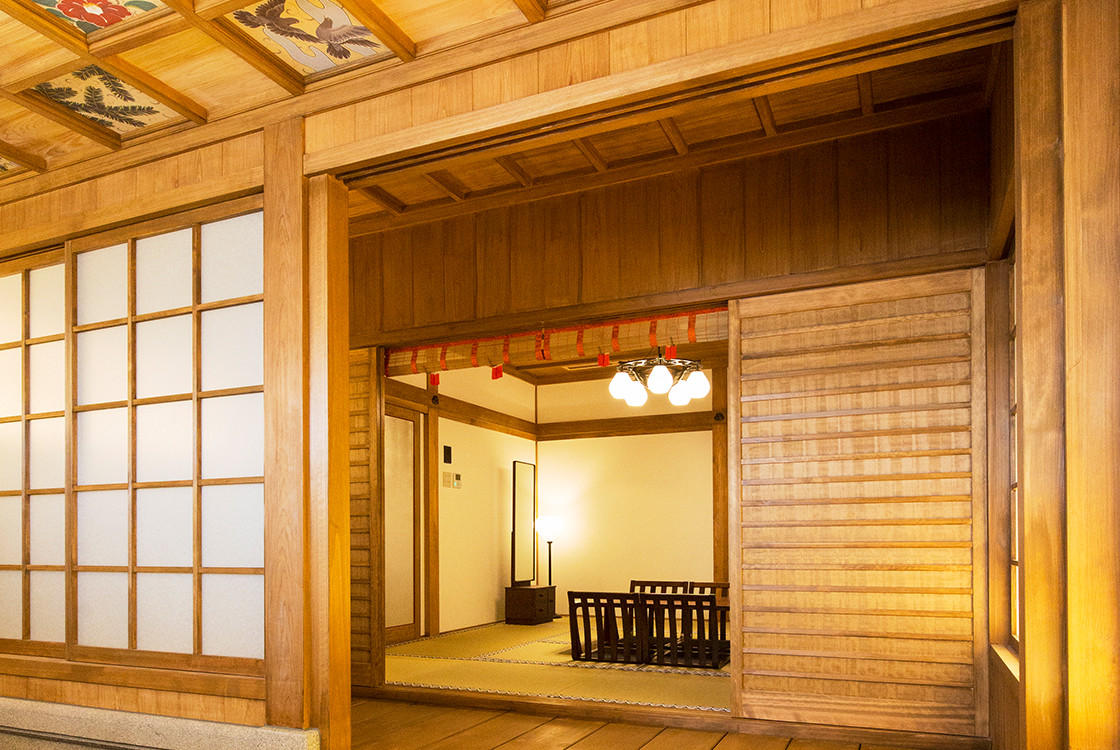
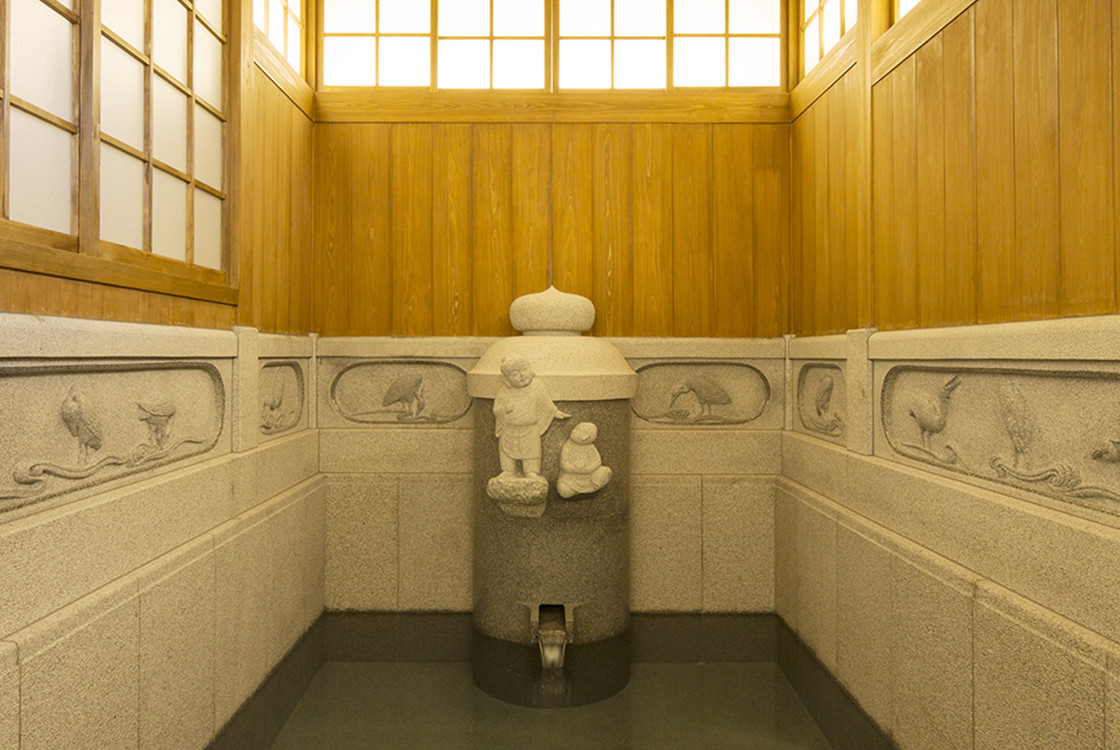
Two Special Bathing Room: Replicas of the Yūshinden
Su are bamboo mats used to make washi (Japanese paper), and Iyosu are known for their especially fine weaving technique. Here in these Special Bathing Room—that replicate the Dōgo Onsen Honkan’s Yūshinden bath, reserved solely for the Imperial Family—blinds called “misu”, as delicate as lace curtains, create an elegant atmosphere.
Large Resting Hall: Spacious room of 100m²
This room is as spacious as the Kami-no-Yu relaxation room on the second floor of Dogo Onsen Honkan. Hanging shades made of ōzu handcrafted washi paper (designated a national traditional handicraft) with metal foil gilding combine the delicate softness of washi paper with the opulent weightiness of gilding to create a unique impression. The resulting effect produced by these hanging shades and the room lighting is an atmosphere of grace and elegance, expressing the high praise Prince Shotoku gave to Dogo Onsen as a place of happiness.
The lampshades of Iyo bamboo wickerwork were made using a traditional Matsuyama handicraft called “yachara ami” that legend says was introduced to Dogo Onsen by Prince Shotoku when he visited.
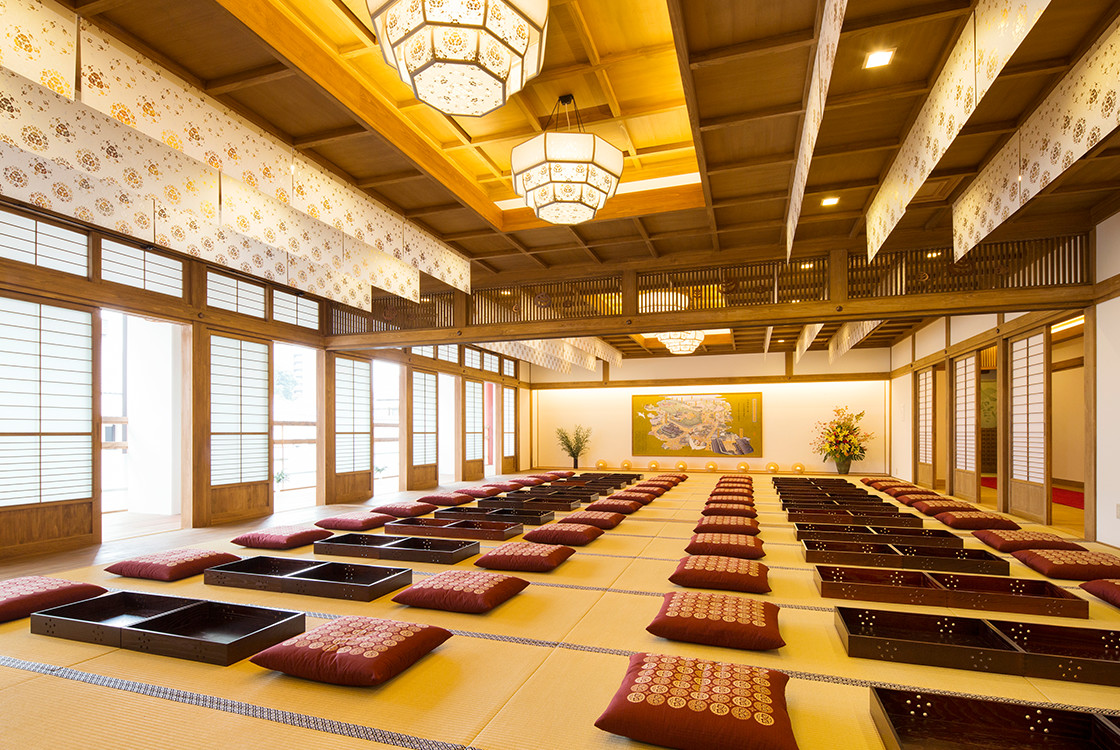
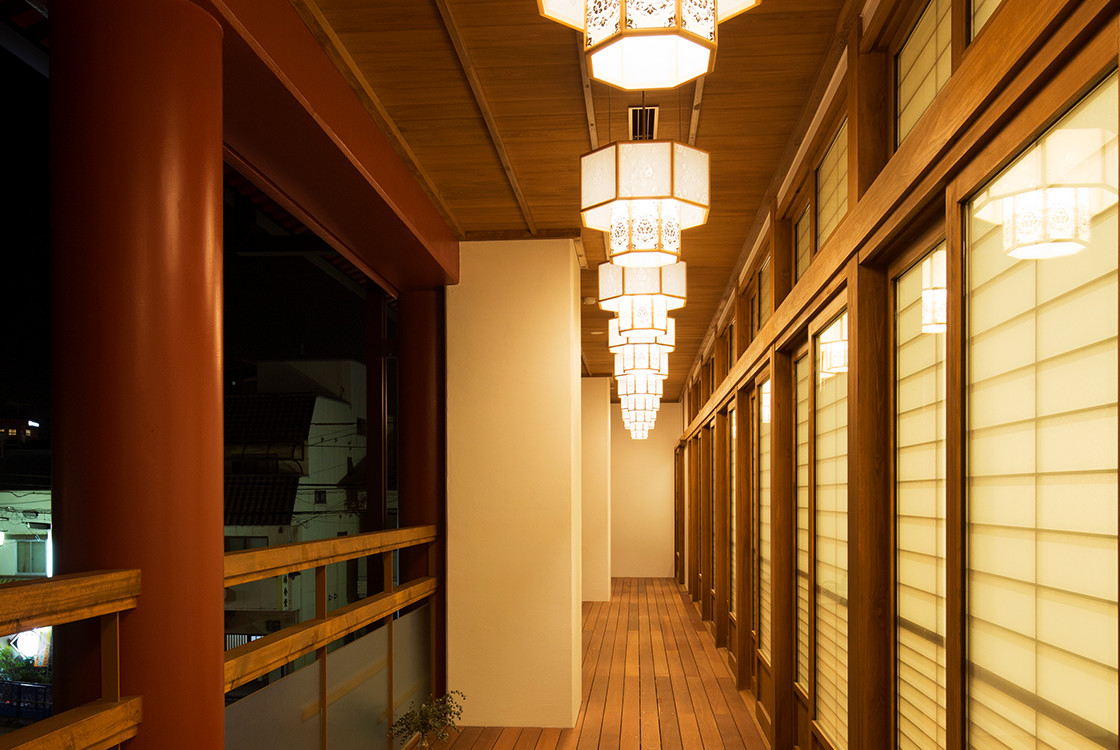
Private Resting Room: Five relaxation rooms depicting the legends of Dogo Onsen
Each of these five private rooms (ma) uses traditional Ehime handicrafts to depict a different story or legend of Dogo Onsen.
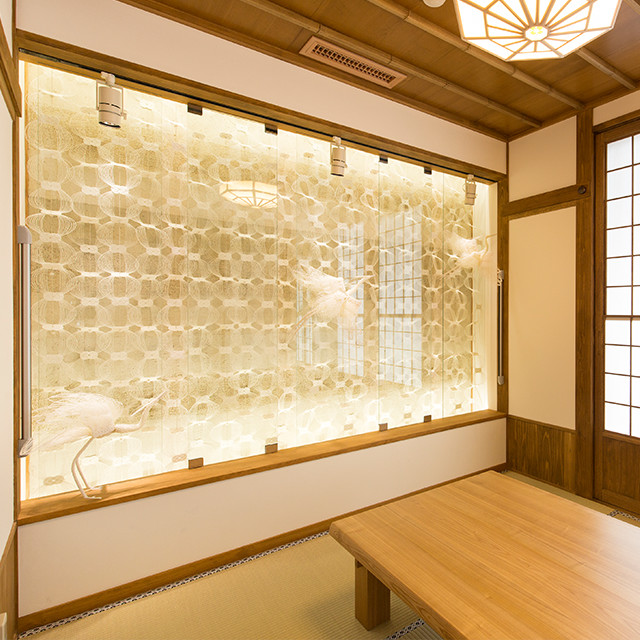
Shirasagi-no-Ma
The traditional handicraft of Iyomizuhiki paper cord is used to illustrate the legend of the injured egret, able to take flight again after being healed by the water of Dogo Onsen, with the image of the hot spring water.
Tamanoishi-no-Ma
For the mural decorations in this room, the tsutsugaki technique (resist dyeing with rice paste applied through a paper tube to draw designs) is used, with the characteristics of the production process enhancing the depiction of the legend of Tama-no-ishi.
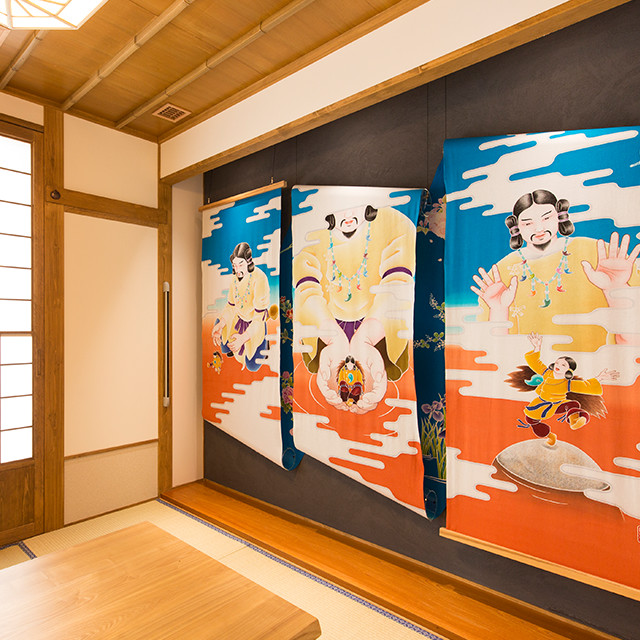
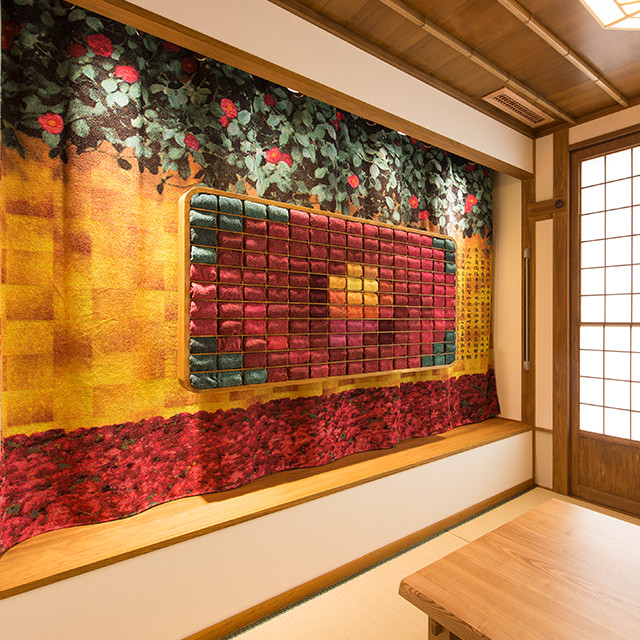
Tsubaki-no-Ma
Based on the theme of Tsubaki-no-Mori (camellia grove), which is believed to have been described on a monument left by Prince Shotoku when he visited Dogo Onsen, camellias are depicted using towels from Imabari, Japan’s largest towel producing area.
Karimiya-no-Ma
Members of the Imperial Court made many visits to Dogo Onsen between the Asuka and Heian periods. This room uses a Sakurai lacquerware maki-e technique, made on a larger scale than ever before, to depict scenes from that era.
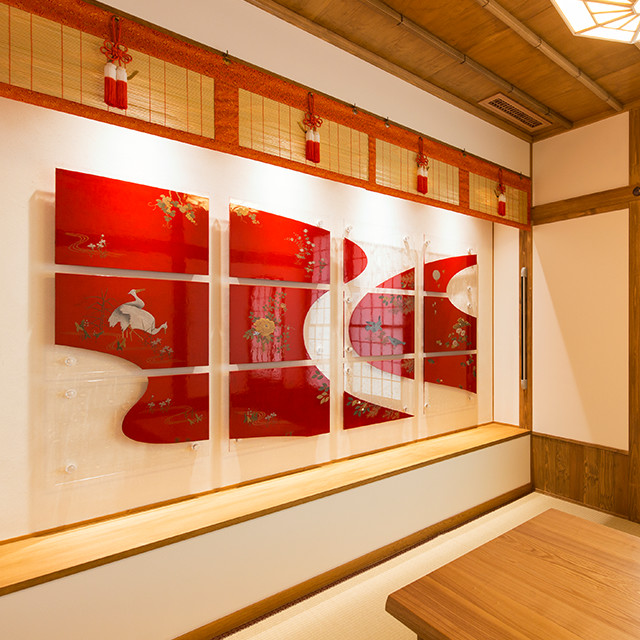
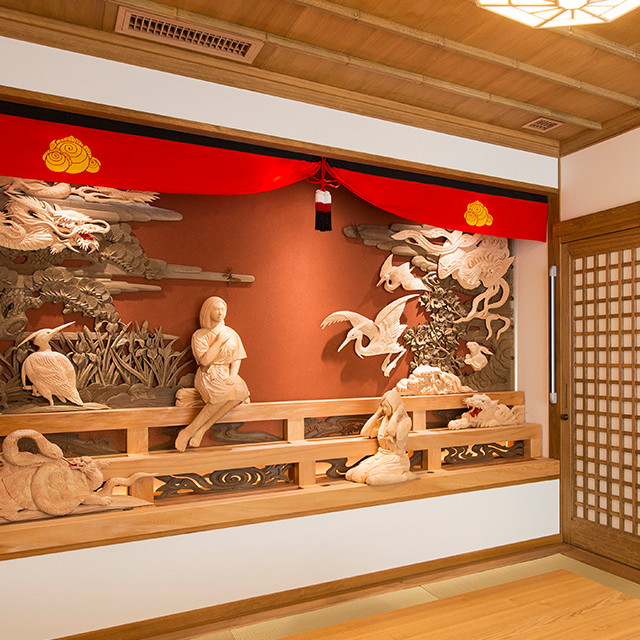
Yugeta-no-Ma
Based on the theme “the bathtubs of Iyo,” the Saijo danjiri carving technique, which employs 100 different carving tools, was used to depict the bustle of Dogo Onsen described in the Tale of Genji (about 1,000 years ago) as “the bathtubs of Iyo.”
Charge・Business hours
| Bath type | 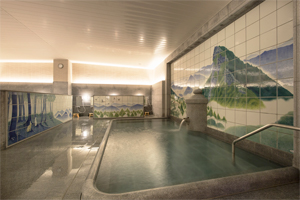 |
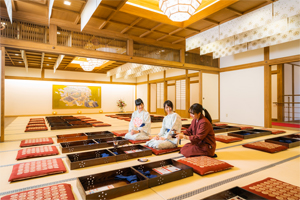 |
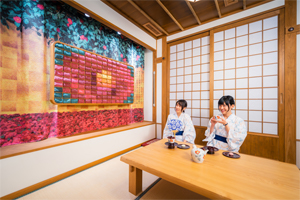 |
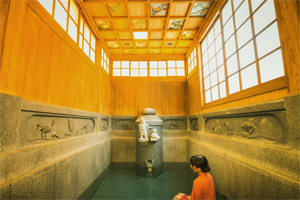 |
|---|---|---|---|---|
| Course | 1st Floor Bathing Room | 2nd Floor large resting Hall | 2nd Floor private room | 2nd Floor Special Bathing Room (family-style bath) |
| Service contents | 1st Floor Bathing Room without relaxation room | 1st Floor Bathing Room + 2nd Floor large resting Hall |
1st Floor Bathing Room + 2nd Floor private room |
1st Floor Bathing Room + 2nd Floor Special Bathing Room |
| Tea and Japanese sweets, rental yukata |
Tea and Japanese sweets, rental yukata, rental towel |
Tea and Japanese sweets, rental yukata, rental towel, rental bath towel, rental yucho bathing |
||
| 1st Floor Bathing Room: body wash, shampoo, conditioner, hair dryer | ||||
| Charge(tax included) Adult: age 12 or older Child: age 2 to 11 |
Adult: 610 yen Child: 300 yen |
Adult: 1,280 yen Child: 630 yen |
Adult: 1,690 yen Child: 830 yen |
Group: 2,040 yen + Adult: 1,690 yen Child: 830 yen |
| Business hours | 6:00 a.m. to 11:00 p.m. | 6:00 a.m. to 10:00 p.m. | 6:00 a.m. to 10:00 p.m. | 6:00 a.m. to 10:00 p.m. |
| Last admission | 10:30 p.m. | 9:00 p.m. | 9:00 p.m. | 8:30 p.m. |
| Length of use | 90 min. | |||
| Reservation | Reservations not available | Required | ||
※Each charge includes tax.
※Each course is available for one-person use.
※Total charge example:
Course: 2nd Floor Special Bathing Room (family-style bath)
Number of persons: 2 adults, 1 child, 3 in total
Charge: 6,250 yen (adults 1,690 yen x 2 + child 830 yen + 1 group 2,040 yen)
3-Bathhouse
Tour TicketEnjoy three hot springs with a ticket that offers a 20% discount from the regular price.

- Facilities / Course
- Dogo Onsen Honkan / Kami-no-yu downstairs
- Dogo Onsen Tsubaki-no-Yu
- Dogo Onsen Annex Asuka-no-Yu / 1st Floor Bathing Room
- Validity Period
- 2days: the sales day and the following day
- Price
- Adult: 1,400 yen
Child: 640 yen
Items sold in the Asuka-no-Yu shop
- ■Amenity items
- ・rental towel /100 yen
- ・rental bath towel /300 yen
- ・Mikan-soap/60yen
- ・safety razor /70 yen
- ・hairbrush /70 yen
- ・shower cap /40 yen
- ■Soft drink menu
- ・milk /190 yen
- ・coffee milk /180 yen
- ・fruit milk /180 yen
- ・drink-type yogurt /160 yen
- ・Dōgo Cider /350 yenn
- ・Orange juice /150 yen
- ・Kirin natural water /170 yen
- ■Gifts and souvenirs
- ・Dogo Onsen Annex Asuka-no-Yu original face towel /650 yen
- ・Dogo Onsen Annex Asuka-no-Yu original bath towel /2,200 yen
- ・Dogo Onsen Annex Asuka-no-Yu original fan (red, blue) /400 yen each
- ・paper ornament (green, orange, black, red, gold) /1,650 yen each
- ・bookmark (green, orange, black, red, gold) /660 yen each
- ・postcard (2 types) /1,100 yen each
- ・Hot water seal (handmade washi paper with ears) /600 yen
- ・Hot Water Seal /400 yen
- ・Hinoki + Mizuhiki Keychain /880 yen
*Each price includes tax.
Categories and types of acceptable payment services
For your convenience, we have introduced cashless payment such as credit cards and electronic money. Acceptable payment services are as follows:
- Credit card
-
- Debit card
-
*Since November 16, 2020, the type of acceptable debit card has been changed from J-Debit to branded debit.
- Electronic money
-
Traffic related IC card
- QR code
-
- ※100 yen in cash is required to use the shoeboxes. (returnable).











